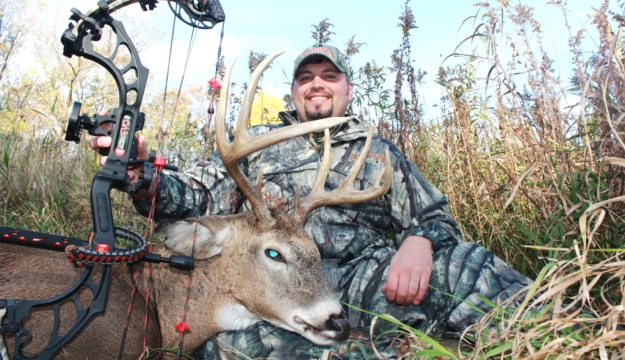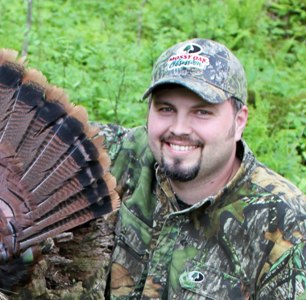ProStaffer Curtis Goettsch Explains Why, Where, When and How He Hunts Iowa Deer

Editor’s Note: Curtis Goettsch, who lives in Cresco, Iowa, first wore military camo given to him by a friend. “I wore that army camouflage until I could save enough money to buy real camouflage,” Goettsch says. Then he purchased a Mossy Oak suit, and he's never changed his choice of camo. He joined the Mossy Oak Pro Staff in 2010 and is a nationally-recognized turkey caller and avid deer hunter. “I feel extremely fortunate to have been selected to be a Mossy Oak Pro Staffer,” Goettsch explains.
I hunt both deer and turkeys. For deer hunting, I wear Mossy Oak Treestand. In the late season, I wear Mossy Oak Break-Up Infinity. During turkey season, I wear Mossy Oak Obsession. If the weather’s cold at the first of the season, I wear Break-Up Infinity. I've been hunting since I was 12-years old. Because I've been blessed to live in Iowa, where we raise a lot of corn, soybeans and wheat, I've always had big deer to hunt.
 My deer hunting, especially bowhunting, is on small farms – sometimes only 23 acres–150 acres. Except for the large field farming operations, many people don’t realize that most of the farms in Iowa are small family-owned farms. In northern Iowa where I live, rarely will you see large tract farming. Our region lends itself more to traditional family farms of less than 100 acres up to about 250 acres. Remember, the purpose for owning the land is to grow crops. So, a good portion of all these farms are planted in crops with only small woodlots that for one reason or the other can’t be cultivated. Generally most of the tracts of land that have timber on the farms will be less than 200 acres. If you look at the areas I hunt from an airplane, you'll see large blocks of agriculture separated by smaller patches of hardwoods. The crops we raise are primarily corn and soybeans. Deer really thrive on these crops. We have ideal habitat for both deer and turkeys as they can feed on the crops while they’re growing, also as the crops are harvested (the waste grain) and then move out of the crop fields into the timber.
My deer hunting, especially bowhunting, is on small farms – sometimes only 23 acres–150 acres. Except for the large field farming operations, many people don’t realize that most of the farms in Iowa are small family-owned farms. In northern Iowa where I live, rarely will you see large tract farming. Our region lends itself more to traditional family farms of less than 100 acres up to about 250 acres. Remember, the purpose for owning the land is to grow crops. So, a good portion of all these farms are planted in crops with only small woodlots that for one reason or the other can’t be cultivated. Generally most of the tracts of land that have timber on the farms will be less than 200 acres. If you look at the areas I hunt from an airplane, you'll see large blocks of agriculture separated by smaller patches of hardwoods. The crops we raise are primarily corn and soybeans. Deer really thrive on these crops. We have ideal habitat for both deer and turkeys as they can feed on the crops while they’re growing, also as the crops are harvested (the waste grain) and then move out of the crop fields into the timber.
The good news for our deer hunters is that most of the crops are being harvested or have been harvested just before or during the rut in our state. So, the deer that spend the summer and early fall living in the crop fields will move into the timber, and the bucks particularly look there for does. Because farmers start harvesting their crops in late September or early October, most all crops are harvested by a week or so before Thanksgiving.
Bow season starts October 1, and the rutting activity in our region usually begins the last week of October and continues through the first week of November. I concentrate my hunting on the last 2 weeks of October and the first 2 weeks of November. Historically, this time is when I've seen the most deer and been able to take some of my biggest bucks. Since I keep trail cameras out all year long, I generally know what bucks I have on my property before I start hunting them. Also, I create a hit list of the bucks I will take, if I have an opportunity.
Tomorrow: Mossy Oak Pro Curtis Goettsch on the Secret to Early Season Agricultural Bow Bucks



























